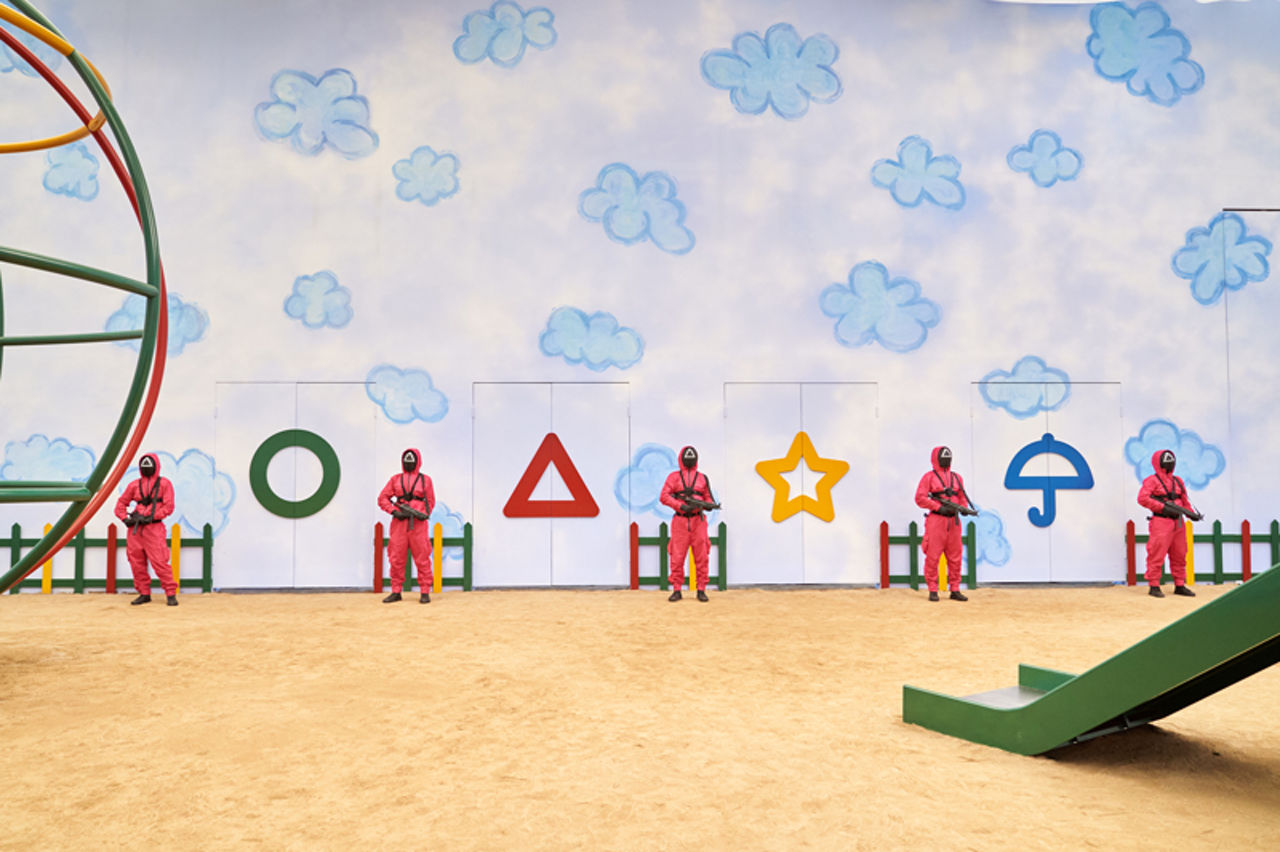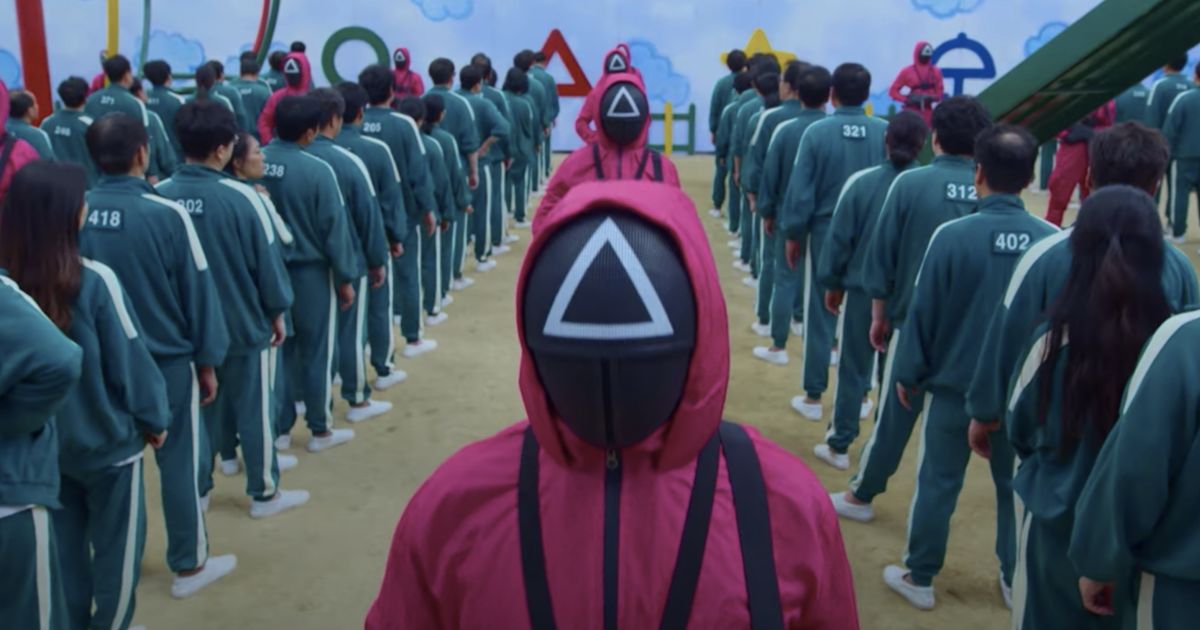What Squid Game can teach us about advertising
In this [be warned, slightly spoilery] article Frances Docx, Strategy Director at 20something London, examines how the global phenomenon that is Squid Game can act as a blueprint for how the advertising industry communicates.
If you had to pick the most powerful shape from a circle, a triangle and a square, which would it be?
What if your choice was from one single square in a sea of hundreds of circles? Would your answer change? And what if you’d seen lots of circles and squares and are only later introduced to a triangle? What seems the post powerful shape now?
Squid Game is a masterclass in using the full arsenal of communication tools available.
Symbolism, relationships, sequencing; it’s all semiotics, the use and interpretation of signs and symbols in our world which create meaning.
This fine-tuned attention to semiotic detail is why South Korean series Squid Game is now the most watched Netflix show in the world, despite being written in a language only 1% of the population understands. Squid Game is a masterclass in using the full arsenal of communication tools available. It is a testament to the old mantra ‘everything communicates’, and a blueprint that those in the advertising and communications industries can learn from.

Above: Symbolism and semiotics is an integral part of Squid Game.
Too often we put all our focus on the upfront stuff (read: the stuff you can test) - the headline, the tag line, the overall concept - when 90% of communication is body language. The subtle signs, symbols, sounds and behaviours of our final piece of communication should be considered in the briefing upfront and continue right through to a director treatment.
It’s a challenge because it asks us to white-knuckle it all the way to the execution. Something that the Squid Game creators know all about. But it is in the execution that work works. For example, imagine if the players in the game had been able to wear their own individual clothes and not the uniform blue tracksuits; our way of relating to them would change dramatically.
The tracksuit is also a subtle nod to class, a key theme in the show... Wardrobe is an under-utilised asset in comms.
The tracksuit-uniform depersonalises players, making the shock of the first game somewhat more palatable. We read that the mass shooting in the first game has killed 56% of the whole group, not that it has wiped out 201 individuals. The tracksuits also communicate allegiance to the group, reinforcing the idea that they have signed up for this.
The tracksuit is also a subtle nod to class, a key theme in the show, which is reinforced in the penultimate game when they are asked to change into tuxedos to mark their ascendancy to the upper ranks. Wardrobe is an under-utilised asset in comms. When the VIPs emerge with animal heads to mask their human identity, we immediately understand their base and inhumane natures. They are not just any animals, they are hunting animals. Had it been a hamster head, it might have hit different.

Above: Wardrobe choices play an important role in communicating unspoken elements to the viewer.
This fastidious building up of meaning through aural and visual textures is the kind of communications artistry we overlook when our go-to solutions for memory-building include ‘make the logo bigger’ or ‘add a celebrity voiceover’. Sure, we don’t always have eight hours to build a complete story arc but we do have all the same tools to create instantaneous associations; music, voice, wardrobe, sequencing, visual hierarchies, symbolism, metaphor.
We don’t always have eight hours to build a complete story arc but we do have all the same tools to create instantaneous associations.
So, what can a few hours on the sofa watching a dystopic South Korean drama teach us? That everything communicates. That we can communicate our key messages through a range of dynamic and interesting ways, not just in a voice over or an endline. Meaning can be diffused through a colour palette, shapes, heights, music, how things relate to one another on a screen. Squid Game is a reminder for us all to turn our attention to the semiotic cues that build a feeling.
Until Squid Game, my previous example of the importance of execution was to read aloud the lyrics to Whitney Huston's I Will Always Love You in as flat a tone as possible, to explain why so much of what we communicate is in the how not the what.
I’m glad I can now update my reference (and so are my colleagues!).
)




 + membership
+ membership








